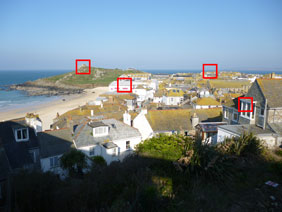Panasonic Lumix DMC-FS18 / FH5
-
-
Written by Gordon Laing
Quality
Panasonic Lumix FS18 / FH5 vs Lumix FS16 / FH2 vs Canon PowerShot A3300 IS Real-life resolution
Panasonic Lumix FS18 / FH5 results : Real-life resolution / High ISO Noise
Panasonic Lumix FS18 / FH5 |
Panasonic Lumix FS16 / FH2 |
Canon PowerShot A3300 IS | ||
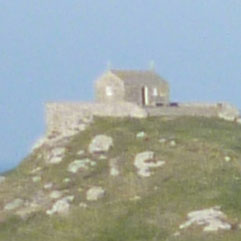 | 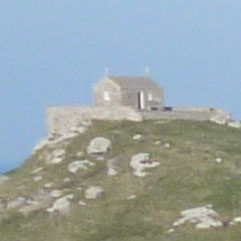 | 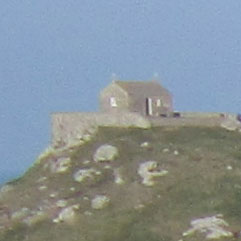 | ||
f9, 100 ISO |
f9, 100 ISO |
f8, 80 ISO | ||
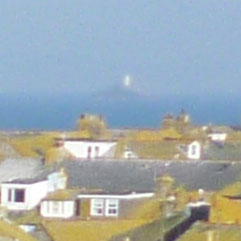 | 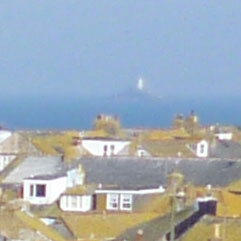 | 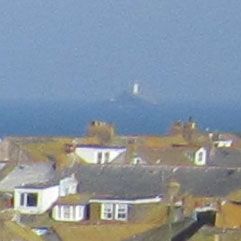 | ||
f9, 100 ISO |
f9, 100 ISO |
f8, 80 ISO | ||
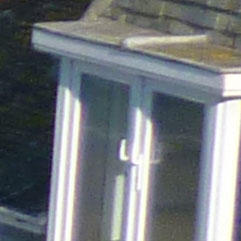 | 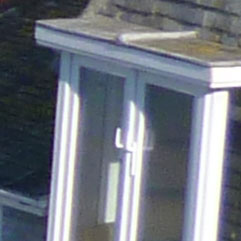 | 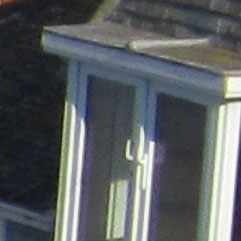 | ||
f9, 100 ISO |
f9, 100 ISO |
f8, 80 ISO | ||
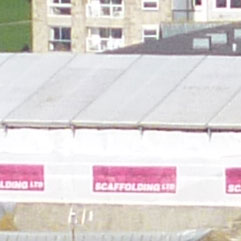 | 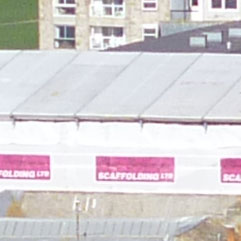 | 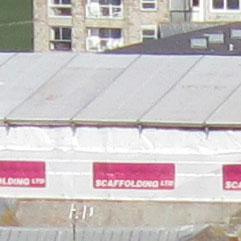 | ||
f9, 100 ISO |
f9, 100 ISO |
f8, 80 ISO |
Panasonic Lumix FS18 / FH5 : Real-life resolution / High ISO Noise
The above image was taken with the Panasonic Lumix FS18 / FH5. The lens was set to its maximum wide angle setting of 5mm (28mm equivalent) and the metering selected an exposure of 1/125 at f9 with the sensitivity at 100 ISO. The original 4608×3456 pixel image had a file size of 6.05MB. The crops are taken from the areas marked with red rectangles and are presented here at 100%. Overall, this outdoor image from the Panasonic Lumix FS18 / FH5 looks good. Though there’s a small amount of clipping on the right side of the histogram that’s invevitable with this scene lit by strong sunlight, there’s good shadow detail and the FS18 / FH5 has made an excellent job of the exposure. The one thing that might have improved things is a wider aperture. With a shutter speed of only 1/125 there was certainly scope for a quicker exposure and larger aperture combination, with less chance of reduced image quality due to diffraction. Having said that, of the four cameras we tested only the Canon PowerShot A3200 IS chose a wide aperture/fast shutter speed exposure and, as it was the exception, we had to use Auto mode to get an aperture setting in line with the other models. You can see the results from the PowerShot A3200 IS on our Canon PowerShot A3300 IS Real life resolution results page. So to the crops. Generally, the level of detail in these crops is not great. The top crop of the chapel is possibly the worst, where we’d normally expect to see well-defined edges – on the chapel building and the boundary between the surrounding wall and the sky – things are looking very indistinct. The crosses on the roof are smudges and the window in the end wall is looking a bit blotchy. Things don’t improve much on the lighthouse crop with the lighthouse itself looking hazy and you can barely make out the island on which it sits. The foreground detail in this crop is also not as sharp as it could be. It’s a similar story with the third crop and there’s also a very slight hint of colour fringing in this crop from the edge of the frame. Things improve a bit in the last crop from near the middle of the frame, though, with reasonably crisp lettering on the banner and sharper detail on the windows in background buildings than is evident elsewhere. It’s worth emphasising that you’re only likely to spot these flaws by close examination at 100 percent magnification. So unless you’re displaying full size images on a big screen or making big prints this isn’t a big an issue as it might seem when you’re examining detail at the pixel level. Having said that, given that the sole reason for opting for the FS18 / FH5 over the less expensive FS16 / FH2 is that its higher resolution sensor provides the opportunity for bigger prints, this is a bit of a disappointment. Alongside the Lumix FS18 / FH5 crops, those from the Lumix FS16 / FH2 look a little better. The FS16 / FH2’s 14 megapixel sensor shows slightly less detail, but the crops look more contrasty and the edge definition is unquestionably better. In the top crop there’s more detail in the chapel and the rocky outcrop in the foreground. The lighthouse is a more sharply defined white column, you can see more of the island and the foreground buildings are clearer. Like the FS18 / FH5 there’s a little bit of chromatic aberration at the edges, and things get a little sharper towards the centre. The PowerShot A3300 IS looks to have the edge over both Lumix models in terms of sharpness and detail, but there is a slightly granular quality to the A3300 IS crops. The top crop of the chapel demonstrates both of these qualities quite well. Even to a casual observer it’s clear to see that there’s more detail in this crop. You can just about make out the crosses on the roof an the door and window frames are more crisply defined than in the FS18 / FH5 crop. You can even discern the window frame. But the sky in this crop looks decidedly grainy compared with the FS18 / FH5. It’s the same story on the lighthouse crop, more detail, but more processing too. The window crop from the edge of the frame looks particulalry clumpy and there’s a little bit of colour finging here too. In the crop from the centre of the frame the PowerShot A3300 IS looks, once again to have the edge with crisper, punchier, more clearly defined detail. Overall, we prefer the crisper more contrasy results from the Canon PowerShot A3300 IS to those from the Panasonic Lumix FS18 / FH5. The Lumix FS16 / FH2, however, has a lot going for it, managing to produce as much detail as the A3300IS without the accompanying noise. Now let’s see how they compare at higher sensitivities in our High ISO Noise results. |
Panasonic Lumix FS18 / FH5 vs Lumix FS16 / FH2 vs Canon PowerShot A3300 IS High ISO Noise
Panasonic Lumix FS18 / FH5 results : Real-life resolution / High ISO Noise
Panasonic Lumix FS18 / FH5 results : Real-life resolution / High ISO Noise
|
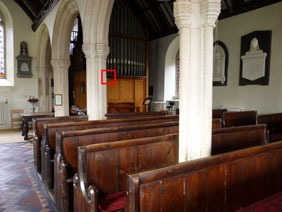 | To compare noise levels under real-life conditions we shot this scene with the Panasonic Lumix FS18 / FH5, the Lumix FS16 / FH2 and the Canon PowerShot A3300 IS within a few moments of each other using their best quality JPEG settings at each of their ISO sensitivity settings. The Lumix FS18 / FH5 and Lumix FS16 / FH2 were set to Normal Picture mode and the PowerShot A3300 IS was set to Program exposure mode, the lenses were set to approximate the same field of view and ISO was manually set. |
The above shot was taken with the the Panasonic Lumix FS18 / FH5 in Normal Picture mode with the lens at its widest angle setting of 5mm (28mm equivalent). The ISO sensitivity was set to 100 ISO and the exposure was half a second at f3.1. The crops are taken from the area marked with the red square and presented below at 100%.
At the base 100 ISO setting the results from the Panasonic FS18 / FH5’s 16 Megapixel sensor are good and there’s excellent detail in a well exposed image. Look very closely and you’ll notice a slight graininess in the wood panelling, but it’s fairly negligible.
At 200 ISO that graniness is amplified slightly and a little of the detail disappears. Quite often there’s not much of a difference between the two bottom rungs of a sensor’s sensitivity scale, but that’s not the story here and our advice to Lumix FS18 / FH5 users would be stick with 100 ISO if you possibly can.
Having said that, 200 ISO produces perfectly acceptable results that would be hard to discern from 100 ISO unless you were looking, as we are, very closely. At 400 ISO, though, there’s another quite marked degradation and image quality is beginning to suffer quite badly; notice how much of the detail in the wood panelling is now smeared and the edge of the column is beginning to break up.
At 800 ISO things take another turn for the worse and now we really are into the kind of image degradation that should make you think hard about alternatives before settling for an increase to this sensitivity. At 1600 ISO the overall image quality is really very poor. What you can’t see clearly from the crop is that the white balance and saturation have also gone a little askew. With a 16 Megapixel sensor like the Lumix FS18 / FH5’s you’ll need to revert to a mindset that thinks of 400 ISO as the highest acceptable quality ISO sensitivity setting.
Compared with the Canon PowerShot A3300 IS we think the Lumix FS18 / FH5 does pretty well, its slightly softer image detail and more aggressive noise reduction producing a more balanced result, particularly at the lower ISO settings. But the more interesting comparison here is with the Lumix FS16 / FH2. Whereas the 14 megapixel Canon PowerShot A3200 IS fared little better in our noise tests than its higher resolution stablemate the PowerShot A3300 IS, the 14 Megapixel FS16 / FH2, by contrast, produces superior results to the 16 Megapixel FS18 / FH5. It’s not a massive difference, but at 100 ISO the FS16 / FH2 crop shows less noise and at 200 ISO it stays that way, we wouldn’t have the same reservations about 200 ISO on the FS16 / FH2 as we do with the FS18 / FH5.
Further up the scale the FS16 / FH2 suffers the same linear degradation as the FS18 / FH2, but maintains a marginal edge all the way to 1600 ISO
In High Sensitivity scene mode both the Panasonic FS18 / FH5 and Lumix FS16 / FH2 produce a 3.1 Megapixel 3200 ISO image which, as you can see from the crops, is quite poorly detailed, but in certain situations possibly better than nothing. The PowerShot A3300’s Low Light Scene mode takes a 4 Megapixel image at an automatically selected ISO setting between 1600 and 6400 ISO. We haven’t included a Low light scene mode crop as the A3300 IS automatically selected 1600 ISO and couldn’t be persuaded to go higher.
Now head over to our Lumix FS18 / FH5 gallery to see some more real-life shots in a variety of conditions.
Panasonic Lumix FS18 / FH5 |
Panasonic Lumix FS16 / FH2 |
Canon PowerShot A3300 IS | ||
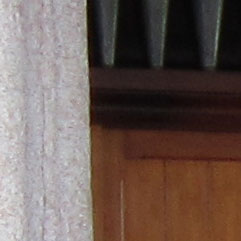 | ||||
80 ISO Not available |
80 ISO Not available |
80 ISO | ||
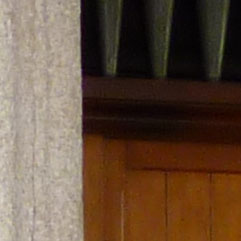 | 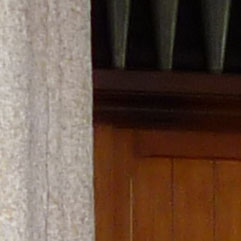 | 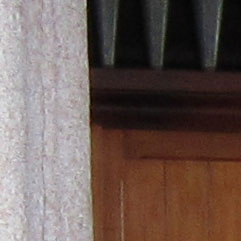 | ||
100 ISO |
100 ISO |
100 ISO | ||
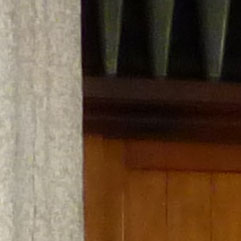 | 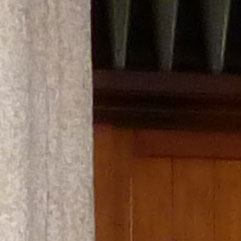 | 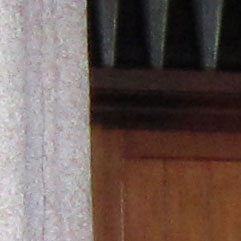 | ||
200 ISO |
200 ISO |
200 ISO | ||
 |  | 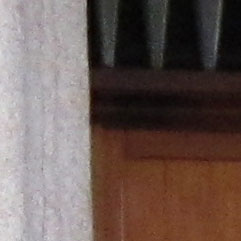 | ||
400 ISO |
400 ISO |
400 ISO | ||
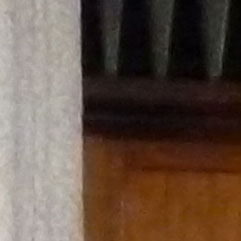 | 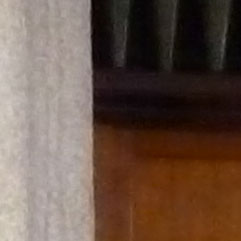 | 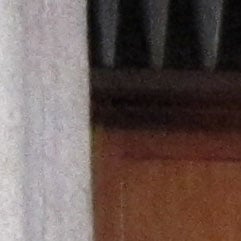 | ||
800 ISO |
800 ISO |
800 ISO | ||
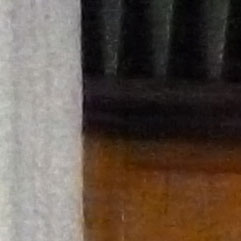 | 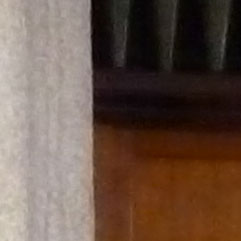 | 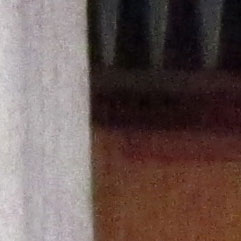 | ||
1600 ISO |
1600 ISO |
1600 ISO | ||
 |  | |||
3200 ISO (High Sens scene mode) |
3200 ISO (High Sens scene mode) |
3200 ISO Not available under conditions of test |

